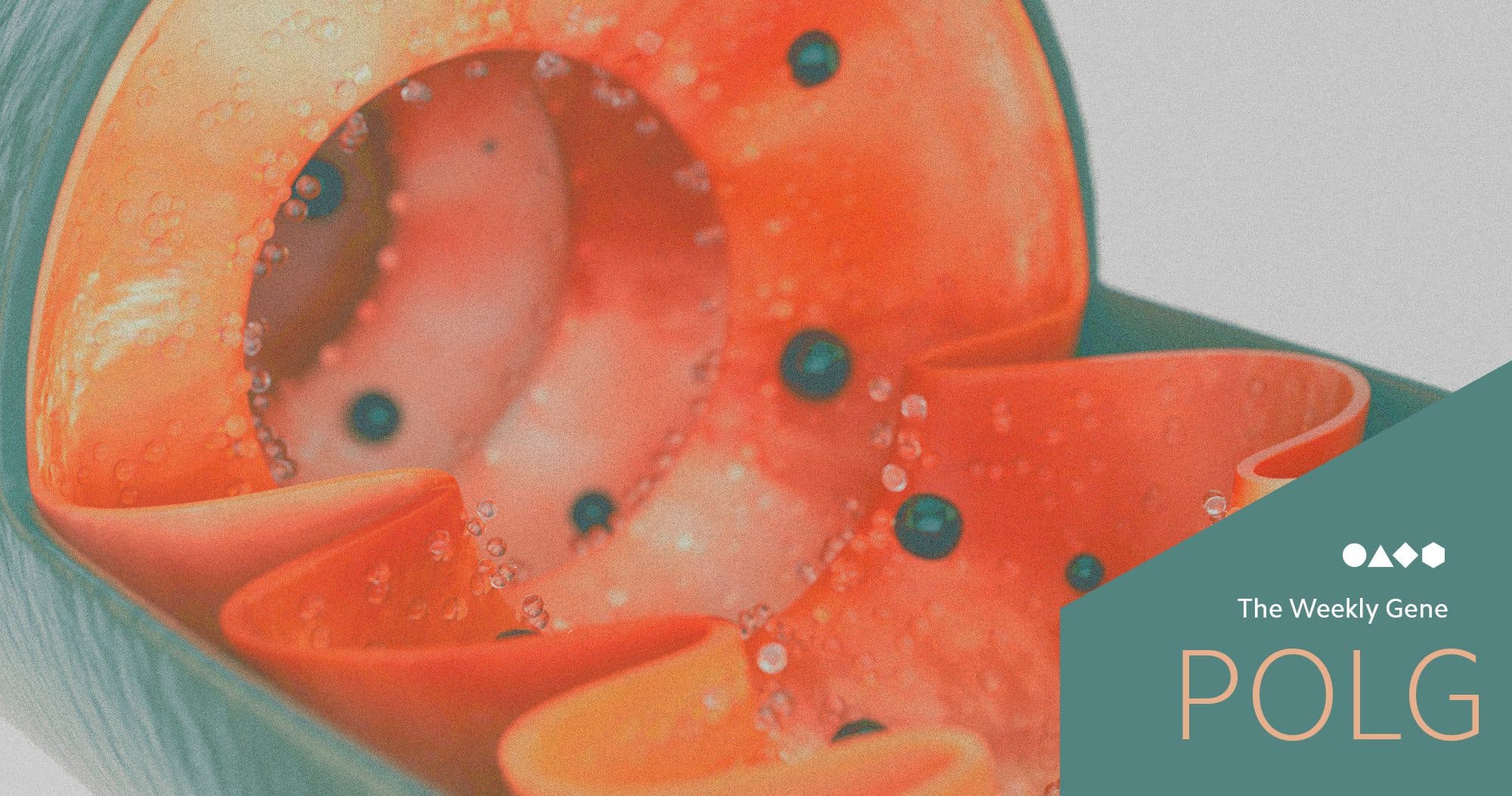What powers the body’s powerhouses?

Who would have thought that the remnants of an ancient bacterial infection would still be affecting us today? Nearly two billion years ago, our very distant ancestors—then just tiny unicellular organisms—became infected by a bacterium. After eons of coevolution, the bacteria has morphed into what we now know as mitochondria. They’ve long since lost their independence, but they still retain vestiges of their individuality. They even have their own DNA that’s separate from the rest of your genome! In order to maintain this independent DNA, the mitochondria have to be able to replicate it and pass it on when new mitochondria are forming. To do this, they call upon the POLG gene.
Mitochondria are in nearly every cell of your body. Functionally, you can think of them like little organs inside your cells, which is why scientists classify them as organelles. They’re sometimes called the “powerhouses” of the cells, owing to their role in producing energy. Sugars and other nutrients have a lot of energy stored in their chemical bonds. Mitochondria strip metabolites of their energy and repackage it in the form of ATP and other similarly energetic molecules. ATP is then sent throughout the cell where it helps drive various important processes.
Muscle mito
We’ve previously talked about the genetics of fast-twitch and slow-twitch muscle fibers. Aside from ACTN3 variants, there’s also a difference in mitochondria. Slow-twitch fibers are good for sustained energy output—like running long distances—and have high levels of mitochondria. On the other hand, fast-twitch fibers are better for short energy bursts during powerlifting events and don’t have as many mitochondria.1
The fact that mitochondria can pump out large amounts of energy makes them a hot commodity for cell types that need a lot of energy. Cells like neurons or the muscle cells controlling your eyelids require lots of energy because they’re constantly active and burning through ATP. Aside from differences among cell types, the amount of mitochondria in a cell can vary throughout time based on environmental conditions.1,2 A good example is exercise: We know that prolonged exercise can stimulate muscle cells to produce more mitochondria that will then help them meet their future energy needs. Like your cells, mitochondria can duplicate themselves to make more in a process called mitochondrial biogenesis.1,2 For the new mitochondria to function, however, they need instructions for how to build the energy-producing machinery.1
In the mitochondrial DNA of each cell, there are approx 16,500 base pairs made from the nucleotides A, C, G, and T. Within this code are 37 genes that collectively help the mitochondria build their energy producing pipeline. But these 37 genes don’t directly help mitochondria replicate themselves—they need almost 1,500 different genes for that. These genes are found in the rest of your DNA and are responsible for exporting their protein products to the mitochondria.
One of these genes is polymerase gamma (POLG). POLG produces a protein by the same name, also called POLG, which is in a class of proteins known as polymerases. These proteins are essential for replicating DNA sequences, because they bind to the existing DNA and construct a new DNA strand based on the template strand they’re bound to. There are multiple different polymerases, but only one of them can go into mitochondria—POLG. Aside from replicating the DNA, POLG has also been shown to have error-correcting functions so that it can proofread the new template it’s making.2
POLG is critical to the process of making new mitochondria and, in turn, is critical to human health. Highlighting this point are the nearly 300 different variants in this gene that are known to cause disease. Many of these variants alter POLG’s protein structure in a way that reduces its ability to either interact with the DNA or proofread the new duplicate DNA strand, which can result in an increased mutation rate within the mitochondrial DNA and reduced mitochondrial biogenesis. On a physiological scale, this affects organs and tissues that are reliant on mitochondrial energy production such as the nervous system, eyes, muscles, kidneys, pancreas, and male reproductive organs. The penetrance and expressivity of these symptoms are wide-ranging and depend on many factors that aren’t entirely understood, but ongoing research is aiming to characterize how changes in our DNA—including the mitochondrial DNA—can lead to disease development.1,2
The mitochondria is no longer a bacteria, but it’s evolved to be an integral part of human physiology. Thanks to genes like POLG, mitochondria are able to hold onto their DNA and a small portion of their independence.
1Jornayvaz, François R., and Gerald I. Shulman. “Regulation of Mitochondrial Biogenesis.” Essays in biochemistry 47 (2010): 10.1042/bse0470069. PMC. Web. 7 May 2018.
2Young, Matthew J., and William C. Copeland. “Human Mitochondrial DNA Replication Machinery and Disease.” Current opinion in genetics & development 38 (2016): 52–62. PMC. Web. 8 May 2018.